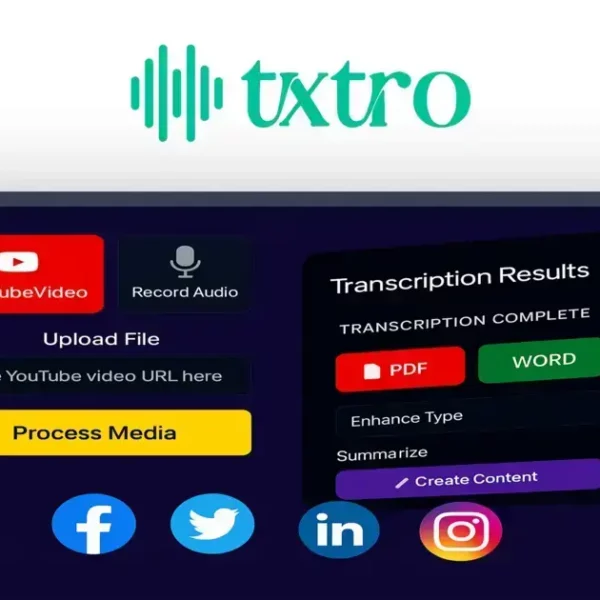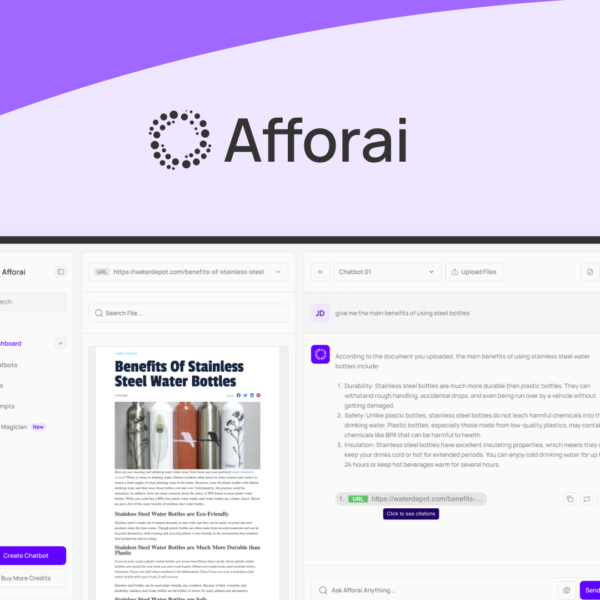A sales tracking app is a powerful tool for businesses looking to improve sales efficiency and performance. By helping teams organize leads, analyze data, and integrate with other tools, it enables smarter decision-making and enhances overall productivity.
A sales tracking app can revolutionize how your business monitors and manages sales activities. With the right tools, you can streamline processes, boost productivity, and provide your team with actionable insights to improve performance. In this article, we will delve into what makes a sales tracking app essential for modern businesses, exploring its benefits, key features, and how to select the best one for your needs.
Understanding Sales Tracking Apps
Understanding sales tracking apps is essential for any business looking to enhance its sales processes. These applications help organizations monitor sales data, track performance metrics, and optimize their sales strategies. By using these tools, businesses can gain valuable insights into their sales activities, identify areas for improvement, and ultimately boost their revenue.
What is a Sales Tracking App?
A sales tracking app is a software solution designed to help sales teams keep track of leads, opportunities, and customer interactions. It centralizes important information, allowing sales representatives and managers to access real-time data and make informed decisions quickly. This technology can vary in features, from basic contact management to advanced analytics.
Key Features of Sales Tracking Apps
Some of the must-have features to look for in a sales tracking app include:
- Contact Management: Easily manage and organize leads and customer information.
- Sales Forecasting: Analyze trends to predict future sales and make informed strategies.
- Performance Tracking: Measure individual and team performance against defined goals.
Best Practices for Using Sales Tracking Apps
To get the most out of a sales tracking app, teams should establish clear guidelines on how to utilize the software effectively. Regular data entry, consistent use of all features, and scheduled reviews of sales performance can significantly enhance productivity. Additionally, training sessions can help staff fully understand the tool and its capabilities.
By embracing a sales tracking app, businesses can streamline their sales processes, enhance collaboration among team members, and improve their overall sales performance.
Top Features to Look for in a Sales Tracking App

When searching for the best sales tracking app, it’s crucial to identify features that will enhance your sales process. Here are some essential features to consider:
1. User-Friendly Interface
A simple and intuitive interface is vital for ensuring that all team members can effectively use the app. A clutter-free design helps users navigate easily and quickly access the information they need.
2. Customizable Dashboards
Sales teams have diverse needs, so a sales tracking app should offer customizable dashboards. This allows each user to prioritize information that is most relevant to them, making data visualization more effective.
3. Real-Time Analytics
Access to real-time analytics provides insights into sales performance and trends. This feature enables sales teams to adjust their strategies promptly based on current data and improve their overall efficiency.
4. Integration with Other Tools
An effective sales tracking app should integrate smoothly with other tools such as CRM systems, email platforms, and project management software. This ensures data consistency across different applications and facilitates better collaboration.
5. Mobile Access
In today’s fast-paced environment, having mobile access to sales tracking apps is a must. Sales representatives can track their activities, update information, and communicate with their teams on the go, enhancing their productivity.
By focusing on these features while selecting a sales tracking app, businesses can optimize their sales processes and drive better results.
Benefits of Using a Sales Tracking App
Using a sales tracking app can greatly benefit your business by enhancing productivity and providing valuable insights. Here are some key advantages:
1. Improved Organization
A sales tracking app helps keep all sales information in one place. This organization allows team members to find leads, track interactions, and manage tasks efficiently, reducing the chaos of scattered information.
2. Enhanced Communication
Sales tracking apps often include communication tools that facilitate collaboration among team members. Team members can share updates, assign tasks, and discuss leads in real-time, fostering a more connected working environment.
3. Data-Driven Decisions
With access to real-time analytics and reports, businesses can make informed decisions. Analyzing data trends helps sales teams identify what strategies are working and where improvements are needed, enabling better resource allocation.
4. Increased Accountability
Sales tracking apps allow managers to monitor individual performance easily. By setting clear goals and tracking progress, accountability among team members increases, motivating everyone to meet their targets.
5. Streamlined Processes
Automating repetitive tasks through a sales tracking app can save time and reduce human error. By simplifying the process of data entry, follow-ups, and reporting, sales teams can focus more on closing deals rather than administrative tasks.
Overall, adopting a sales tracking app can lead to increased efficiency, better team collaboration, and ultimately, higher sales performance.
How to Choose the Right Sales Tracking App

Choosing the right sales tracking app is essential for maximizing your sales productivity. Here are some important steps to help you find the best fit:
1. Assess Your Needs
Start by identifying what specific features and functionalities you need. Consider factors such as team size, sales process complexity, and integration requirements with other tools. Understanding your unique needs will guide your selection process.
2. Research Available Options
Take time to research various sales tracking apps available in the market. Look for apps that have good user reviews, a solid reputation, and positive testimonials. Checking reputable websites and industry blogs can provide valuable insights.
3. Test with Free Trials
Most sales tracking apps offer free trials. Take advantage of these opportunities to test different apps. During the trial, observe how intuitive the interface is, how easily your team adapts, and whether the app meets your requirements.
4. Evaluate Customer Support
Consider the level of customer support offered by the app developers. Reliable customer support is crucial for resolving issues quickly. Look for apps that provide multiple support channels, such as live chat, email, and phone support.
5. Compare Pricing Plans
Pricing is a significant factor when selecting a sales tracking app. Compare various pricing plans and what features are included at each level. Ensure that you choose a plan that fits your budget while still providing the necessary features.
By following these steps, you can select a sales tracking app that effectively meets your business needs and enhances your sales process.
Integrating Your Sales Tracking App with Other Tools
Integrating your sales tracking app with other tools can significantly enhance its functionality and improve your overall sales process. Here are key points to consider when integrating:
1. Identify Essential Tools
Determine which tools your sales team currently uses that would benefit from integration. Common tools include Customer Relationship Management (CRM) systems, email services, marketing platforms, and project management software.
2. Check Compatibility
Before selecting a sales tracking app, ensure that it is compatible with the tools you want to integrate. Look for apps that offer built-in integration options or APIs that allow easy connectivity with third-party applications.
3. Utilize Automation Features
Integrations often come with automation capabilities. These may help reduce manual data entry, ensuring that information is updated across all platforms in real-time. Utilizing automation streamlines workflows and saves time for the sales team.
4. Train Your Team
After integrating your sales tracking app with other tools, it is essential to train your team on how to use them effectively. Proper training helps ensure that all users can leverage the integrations to improve their sales processes.
5. Monitor and Optimize
Regularly monitor how the integrations affect your sales workflow. Gather feedback from your team to determine if any adjustments are necessary. Optimizing your integrations leads to increased efficiency over time.
By integrating your sales tracking app with other essential tools, you can create a seamless workflow that maximizes productivity and improves sales performance.
In Summary: Maximizing Sales with the Right Tools
Using a sales tracking app can significantly boost your sales efforts by providing organization, communication, and data-driven insights. By choosing the right app, assessing your needs, and integrating it with other tools, you can create a powerful sales strategy.
Remember to focus on features that matter, take advantage of free trials to find the best fit, and engage your team through training. Adopting these strategies will help your business track success and drive growth effectively.
With the right approach and tools, you can unlock the full potential of your sales team and achieve remarkable results.
FAQ – Frequently Asked Questions about Sales Tracking Apps
What is a sales tracking app?
A sales tracking app is a software tool that helps businesses monitor their sales activities, manage leads, and analyze performance data.
What are the benefits of using a sales tracking app?
Using a sales tracking app improves organization, enhances communication among team members, and ensures data-driven decision-making for better sales strategies.
How can I choose the right sales tracking app for my business?
Assess your specific needs, research available options, take advantage of free trials, evaluate customer support, and compare pricing plans to choose the best app.
Why is integration with other tools important?
Integration with other tools allows for a seamless workflow, reduces manual data entry, and enhances collaboration across different platforms.
How can I ensure effective use of a sales tracking app?
Provide training for your team, encourage regular use, and continuously monitor app performance to optimize its features.
What features should I look for in a sales tracking app?
Look for user-friendly interfaces, customizable dashboards, real-time analytics, mobile access, and built-in integration options with other tools.




